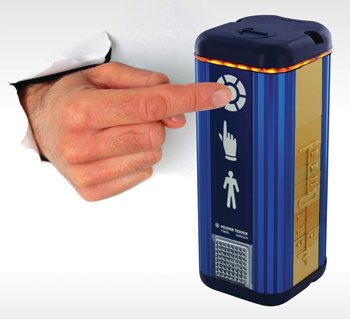It is a challenge to plan urban traffic areas for pedestrians, cyclists and all others who share city space for them to feel more safe and secure than today. But acoustic pedestrian signals now offer the elderly and visually challenged pedestrians the chance to adjust the signals in order to claim the roads from vehicular traffic for the duration they need it to cross over to the other side – safely.
Planning for safe pedestrian crossings and then prioritising cars, public transport, pedestrians or bicycles over each other in the order of their safety leads to a conflict of interest. In some parts of cities, the safety level of pedestrians and cyclists with other vehicles is demarcated by a bridge or a tunnel. Such measures are expensive but they serve all interests. The other parts of the cities require smart solutions to enable the pedestrians and cyclists to cross the streets safely. A traffic planner needs to consider all the interests and conflicts of interests before taking a decision. Deciding the order of priority is not easy. The matter gets aggravated as all the pedestrians do not form a homogeneous group.
Certain statistics show that the elderly form the highest risk group when it comes to road safety as they walk slowly and hear & see less. Children too are vulnerable though we protect them better. However, the disabled, specially the visually impaired, are at a grave risk while moving in traffic on their own. The point here is – do we care about helping these vulnerable road users? Or, will we allow the cars, buses, cable cars and motorcycles to take over our roads completely? No doubt, everyone is in a hurry to reach their destination but the million dollar question is – who is worth investing in more during heavy traffic; who needs to be given priority? And for this, a related question that arises is: Does anyone care? And if the answer is in the affirmative that yes, we do care and that we must ensure that number of serious injuries and fatalities are brought down, then there is still time – we can change things for the better.
In many cities, priority of movement in traffic situations – especially in the central part of cities — is given to public transport, bicycles and pedestrians; cars always get to wait the longest. What is required all over is a political will to save human lives and political courage to reduce the number of cars in city centres. This will improve the traffic environment in cities.
Challenges for pedestrian crossing
Pedestrians face many challenges with regard to safety on the roads. One new problem that stares them in the face is that of electric vehicles. Till now, we have been quite used to hearing the sound of an approaching vehicle before we decide to cross a road. But since the electric vehicles make no noise, we often do not get to hear the approaching vehicle and miscalculate our timing to cross the road safely. This silent car problem is a reminder to us on how much we use our senses every day without even realising it. Mobile/smart phones pose another huge challenge as we become oblivious to our surroundings while talking on the phones and crossing the streets simultaneously. And of course, we cannot ignore the fact that most of the cities display utter lack of respect for pedestrians.
A campaign on pedestrian safety that hit me hard was the fantastic “Respect the Pedestrian” campaign I witnessed while travelling from Sao Paulo (Brazil)airport to the city’s centre. The message was loud and clear. Such initiatives need to be emulated by other countries to get better traffic safety results. To save the lives of pedestrians, we need to respect the pedestrians first.
Till now, we have been quite used to hearing the sound of an approaching vehicle before we decide to cross a road. But since the electric vehicles make no noise, we often do not get to hear the approaching vehicle and miscalculate our timing to cross the road safely.
When it comes to road safety, signals play a very important role. If you go from a country with a long history of sound emitting pedestrian signals to a city without any sound, it is a challenge to discern red signal from the green one. The automatic reaction in such circumstances is the question we often ask ourselves: Is it really green for me now, i.e. is it a ‘walk signal’ for me? We normally use both vision and sound to decide if it is safe to step out into the street. It’s a tremendous benefit to use more than one sense before you leave the curb, especially if you are distracted by your smart phone. Just imagine the situation for the visually impaired pedestrian then. Both – the experience mentioned above and the various case studies – come to the same conclusion: acoustic pedestrian signals save lives of both types of pedestrians – those who have normal vision and those who are visually challenged.
 TrafficInfraTech Magazine Linking People Places & Progress
TrafficInfraTech Magazine Linking People Places & Progress



